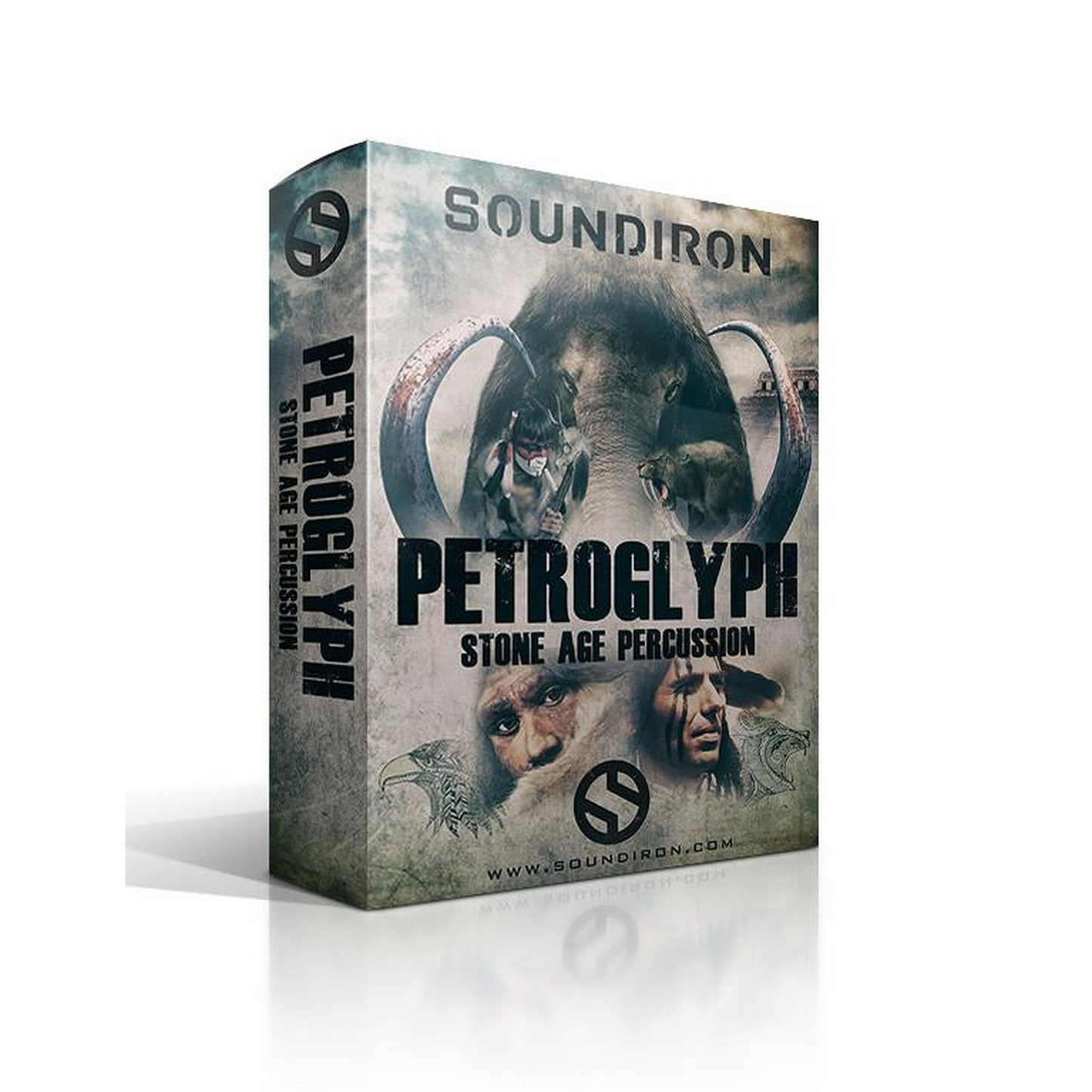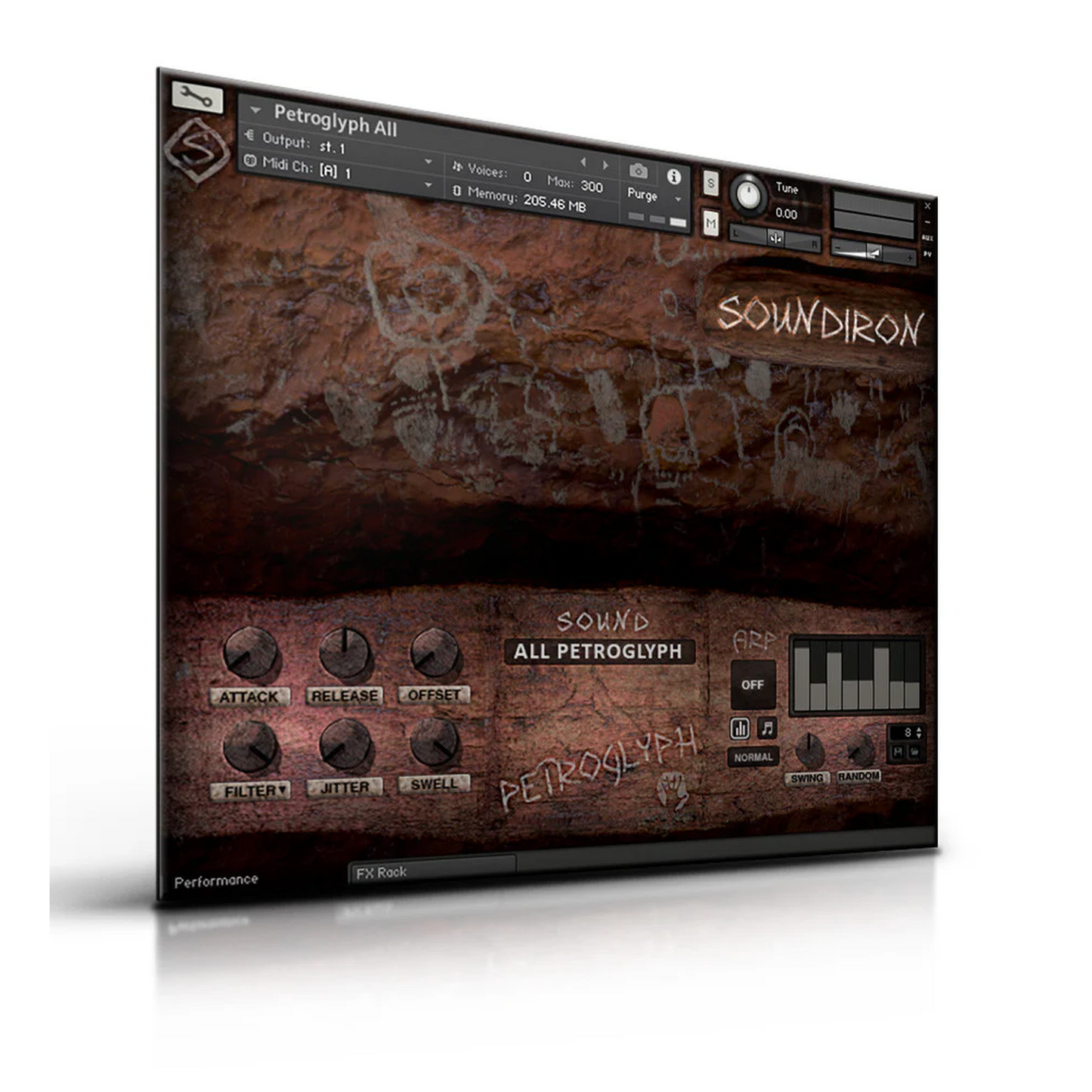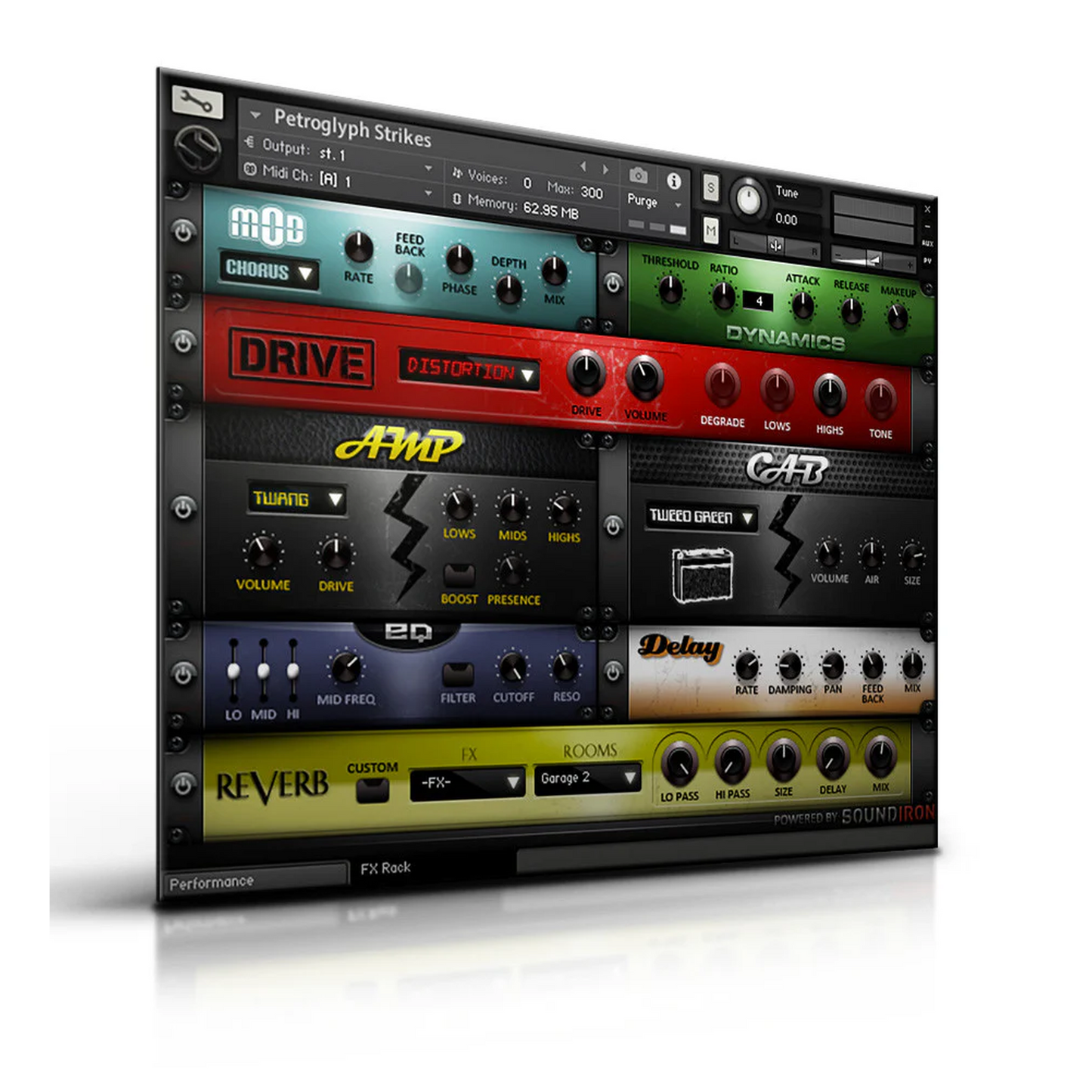Petroglyph | Soundiron



Petroglyph | Soundiron Details
Petroglyph is a unique stone percussion library that captures the raw, elemental sounds of pre-Columbian artifacts from North America. This collection features authentic primitive stone tools, weapons, and objects made from obsidian, slate, flint, granite, and more. Petroglyph delivers a powerful and organic percussive experience, offering a fresh alternative to traditional drums and electronic percussion. Whether you're creating cinematic scores, ambient textures, or experimental beats, this library provides an inspiring palette of primal sounds.
Key Features of Petroglyph:
- Authentic Ancient Sounds: Includes recordings of real stone artifacts, such as mortars, pestles, grindstones, axe heads, and arrow tips.
- Extensive Sound Library: Features 100 sound sets with 8-10 round-robin variations per velocity layer.
- Versatile Applications: Use for percussion, electronic beats, sound effects, or game audio.
- Custom Kontakt Interface: Offers attack/release controls, transient shaping, dynamic swelling, and filter selection.
- Powerful Arpeggiator: Create dynamic rhythmic sequences with step sequencer and custom pattern options.
- Built-In Effects: Includes convolution reverb with unique spaces like cathedrals, tunnels, and bunkers.
- High-Quality Audio: 24-bit / 48kHz uncompressed WAV samples for pristine sound.
Example Use Cases of Petroglyph:
- Film & Game Composers: Add organic, prehistoric percussion to adventure, fantasy, and historical soundtracks.
- Music Producers: Integrate raw stone percussion into ambient, tribal, and experimental music.
- Sound Designers: Craft unique sound effects for cinematic and interactive media.
- Electronic Musicians: Use ancient textures as unconventional drum and rhythm elements.
Why Choose Petroglyph?
Petroglyph brings history to life by transforming ancient artifacts into modern musical tools. With its deep sonic character, flexible controls, and high-quality recordings, this library is a must-have for anyone looking to explore the primal roots of rhythm.




